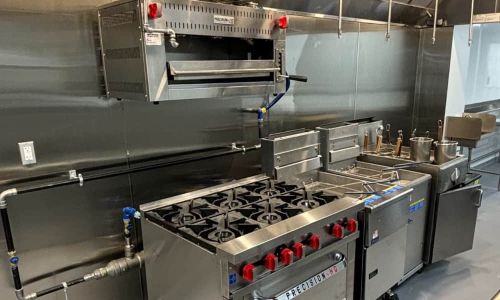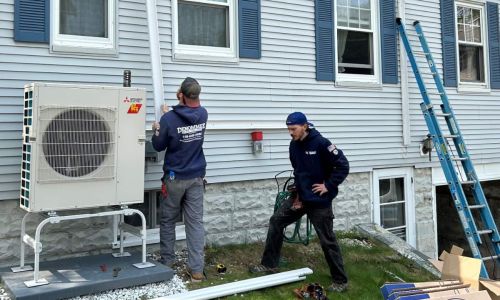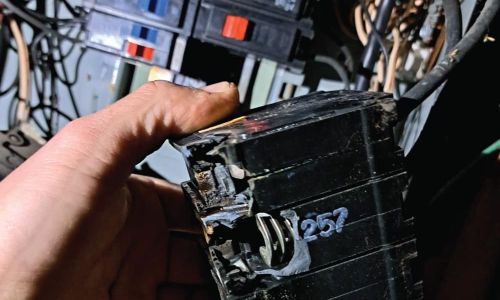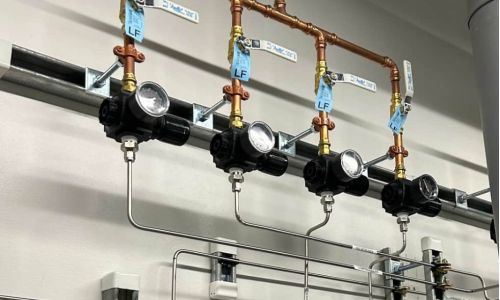Explore Sump Pump System Installation and Maintenance
What is a sump pump system?
Sump pumps are crucial for protecting your home from water damage, especially in areas prone to flooding or with high groundwater levels.
Typically consisting of several key components that work together to remove excess water from a sump pit (usually located in a basement or crawl space) and prevent flooding. Here are the main components of a sump pump system:
Sump Pit (Sump Basin):
This is the container that collects water from the surrounding area, usually the foundation of the house. It is typically installed in the lowest part of the basement or crawl space.
Sump Pump:
The pump is the central component of the system. It is responsible for pumping water out of the sump pit and away from the house. Sump pumps can be submersible (placed inside the pit) or pedestal (mounted above the pit with the pump motor located outside).
Discharge Pipe:
The discharge pipe carries the water from the sump pump to an area outside the house, where it can safely drain away, usually to a storm drain, dry well, or a safe distance from the foundation.
Check Valve:
A check valve is placed on the discharge pipe to prevent water that has already been pumped out from flowing back into the sump pit once the pump has stopped running.
Float Switch:
The float switch is a sensor that activates the sump pump when the water level in the sump pit rises to a certain point. It turns the pump on and off as needed to keep the water level in the pit manageable.
Power Source:
The pump requires electricity to operate. Some systems may have a backup power source, like a battery or a generator, in case of a power outage to ensure the pump continues working when needed.
Battery Backup (Optional):
In case of a power failure, a battery backup system can ensure the sump pump continues to function, preventing potential flooding.
Alarm System (Optional):
Some sump pump systems come with an alarm that sounds when the water level in the pit gets too high, alerting homeowners to potential issues with the pump or a need for maintenance.
These components work together to help prevent water damage by keeping water away from the foundation of a building, ensuring proper drainage, and reducing the risk of flooding.
Why install a sump pump?
Here are some reasons to install a sump pump and why maintenance is important:
Flood Prevention: Sump pumps help prevent basement flooding by pumping excess water away from the foundation of your home. This is particularly important in areas where rainfall is heavy or in homes with poor drainage systems.
Preventing Water Damage: Without a sump pump, water could seep into your basement or crawl space, potentially damaging walls, floors, insulation, and your belongings.
Prevent Mold and Mildew Growth: Moisture accumulation in basements can create a breeding ground for mold and mildew, which can cause health problems and structural damage. A sump pump keeps the area dry.
Protecting the Foundation: Standing water around the foundation can cause cracks, settling, and other structural issues. A sump pump helps to divert this water away and protect your home’s foundation.
Increasing Home Value: A sump pump can increase the resale value of your home, especially in areas where flooding is a concern, since it provides an extra layer of protection.
Is Sump Pump Maintenance Important?
Yes. Here are several reasons why proper sump pump maintenance is important:
Preventing Malfunctions: Over time, sump pumps can develop issues due to wear and tear. Regular maintenance ensures that the pump operates effectively when it’s needed most, especially during heavy rains or storms.
Clear Clogs: Dirt, debris, and sediment can accumulate in the sump pit, potentially clogging the pump. Regular maintenance helps keep it clean and working properly.
Battery Check (if applicable): Some sump pumps have a battery backup system. Checking the battery and ensuring it is fully charged ensures the pump will work even during a power outage.
Prolonging Pump Life: Just like any appliance, a sump pump lasts longer with proper maintenance. Cleaning the pump, checking the float switch, and inspecting the discharge line can all prevent costly repairs or replacements.
Ensuring Efficiency: A well-maintained sump pump will be more efficient, reducing the chance of excess water buildup that could lead to damage.
Key Maintenance Tips:
- Test the pump regularly by pouring water into the sump pit and checking if the pump activates.
- Clean the sump pit to remove any debris or buildup.
- Ensure the discharge line is free from obstructions.
- Check the float switch to make sure it moves freely.
- Inspect the power source (whether it's plugged in or the battery backup is functioning).
- Schedule a professional inspection every 1-2 years for thorough upkeep.
Denommee Plumbing, HVAC & Electric are the expert sump pump plumbers that install and service sump and ejector pumps. Ensure your home is ready for the April rain, book a sump pump check-up with one of our plumbing pros. During these visits, our experts inspect the pump, inlet screens, check valves, pit condition, discharge locations, etc. Count on our plumbers for prompt sump pump repairs and professional sump pump installation services.
The Denommee team always strives to deliver a solid Five Star experience each and every time we get the chance to assist with customer’s plumbing and HVAC system needs. We are the truste, local plumbers near Tyngsboro, MA to call, or when searching for plumbers near Burlington, MA.
While some plumbing repairs like a clogged toilet might be a quick and easy fix, there are others—such as sump pumps, water heater and garbage disposal repairs—that should be left to the experts. Our dedicated team of service plumbers near Tyngsboro and Burlington in Massachusetts and southern NH has the experience to fix just about any plumbing-related issue you might have—and we are available any day of the week, 365 days a year.




